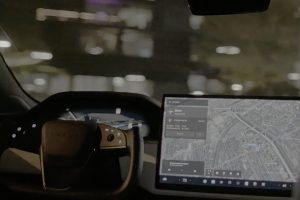- 📰 Tesla responded sternly to a Washington Post article alleging Autopilot dangers and irresponsibility in deployment.
- 🌐 The Washington Post claimed that Autopilot contributed to about 40 fatal or serious crashes, with eight occurring in areas not designed for Autopilot use.
- 🚗 Tesla countered, emphasizing its commitment to safety and the positive impact of Autopilot when used responsibly.
- 📊 Tesla presented safety metrics indicating significantly fewer crashes when Autopilot is engaged compared to when it’s not.
- 🛣️ Autopilot features, including Traffic-Aware Cruise Control and Autosteer, are classified as Level 2 driver-assist systems, requiring driver supervision.
- 🌐 Tesla argued that instances of misuse, highlighted by the Washington Post, misrepresented the system’s alleged risks.
- 📄 Tesla criticized the Post for omitting crucial facts in its narrative, pointing to a pending lawsuit and the driver’s responsibility in a crash.
- 🚦 The response also clarified details about the specific incidents, emphasizing the driver’s awareness of Autopilot’s limitations.
- 🚨 Tesla concluded by stating its commitment to improving safety systems, making them widely available, and collaborating with regulators for enhanced road safety.
In the fast-paced world of autonomous driving and electric vehicles, the spotlight often falls on Tesla’s Autopilot system. Recently, Tesla found itself at the center of a heated debate following a Washington Post article that raised concerns about Autopilot’s safety and its deployment in inappropriate areas. In this deep dive, we explore the key arguments, dissect Tesla’s stern response, and ponder the broader implications for the future of autonomous driving.
Understanding the Washington Post’s Claims
- Fatal and Serious Crashes: The Washington Post asserted that Autopilot played a role in around 40 fatal or serious crashes since 2016.
- Inappropriate Deployment: The article highlighted eight incidents where Autopilot was reportedly used in areas not designated for its deployment, raising questions about Tesla’s responsibility.
Tesla’s Defense: A Closer Look
- Commitment to Safety: Tesla responded assertively, emphasizing its unwavering commitment to safety for both Tesla owners and pedestrians.
- Positive Impact of Autopilot: Tesla presented safety metrics, showcasing significantly fewer crashes when Autopilot is engaged compared to traditional driving.
Autopilot Features and Classification
- Level 2 Driver-Assist Systems: Autopilot features, including Traffic-Aware Cruise Control and Autosteer, fall under the classification of Level 2 driver-assist systems.
- Driver Supervision Requirement: Tesla highlighted that despite Autopilot’s capabilities, driver supervision is essential, and drivers are constantly reminded of their responsibility.
Tesla’s Critique of the Washington Post
- Misrepresentation of Risks: Tesla argued that instances of misuse were sensationalized by the Washington Post, leading to a misrepresentation of the system’s actual risks.
- Omitted Crucial Facts: Tesla criticized the Post for omitting crucial details, particularly in a pending lawsuit, and stressed the driver’s responsibility in accidents.
Clarifying Specific Incidents
- Driver’s Awareness: Tesla’s response emphasized the driver’s awareness of Autopilot’s limitations, countering claims of over-reliance or complacency.
- Speed Control and Alerts: Specific incidents were clarified, pointing out instances where the driver was overriding Autopilot, leading to warnings and alerts.
Tesla’s Forward Commitment
- Improving Safety Systems: Tesla concluded its response by expressing a moral obligation to enhance safety systems continually.
- Wider Availability: The company defended its stance on making these advanced systems available to a broader consumer base, backed by data showing safety benefits.





